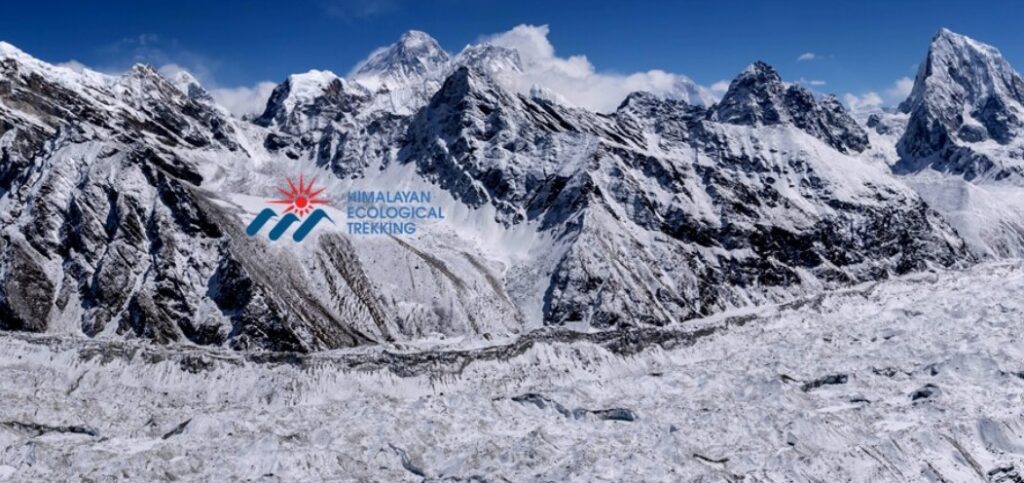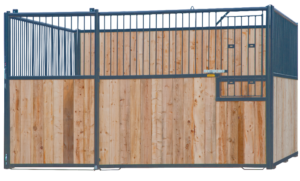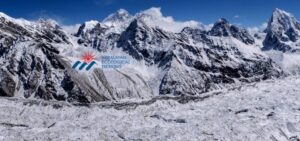The Tsum Valley Trek sits tucked away in northern Nepal. It offers something rare: authentic culture without the crowds. The Manaslu Circuit Trekking circles the world’s eighth-highest mountain. Both trails share the same region but give you different experiences. The Tsum Valley focuses on Buddhist culture and quiet valleys. The Manaslu Circuit pushes you over high passes with mountain views that stop your breath. Together, they create one of Nepal’s most rewarding adventures.
Table of Contents
The Tsum Valley Trek sits tucked away in northern Nepal. It offers something rare: authentic culture without the crowds. The Manaslu Circuit Trekking circles the world’s eighth-highest mountain. Both trails share the same region but give you different experiences. The Tsum Valley focuses on Buddhist culture and quiet valleys. The Manaslu Circuit pushes you over high passes with mountain views that stop your breath. Together, they create one of Nepal’s most rewarding adventures.
Understanding These Two Iconic Treks
What Is Tsum Valley Trek?
Tsum Valley opens like a secret door in the Himalayas. The word “Tsum” comes from Tibetan. It means “vivid.” Walk here and you’ll understand why.
The valley was closed to outsiders until 2008. This isolation preserved something special. Ancient monasteries dot the hillsides. Prayer flags flutter across stone villages. People here follow Tibetan Buddhism deeply. They practice traditions their ancestors started centuries ago.
The trail runs about 10 to 12 days. You start from Soti Khola. The path climbs through bamboo forests and past waterfalls. You’ll cross suspension bridges that swing over rushing rivers. Villages like Chhokangparo and Nile sit at high altitudes. The air gets thin but the views expand.
Mu Gompa marks the valley’s spiritual heart. This monastery sits at 3,700 meters. Monks there welcome trekkers with butter tea. They share stories about the valley’s history. The place feels timeless.
What Is Manaslu Circuit Trekking?
Manaslu Circuit wraps around Mount Manaslu. At 8,163 meters, it’s Nepal’s eighth-highest peak. The circuit takes 14 to 18 days depending on your pace.
You follow the Budhi Gandaki river at first. The trail stays moderate. Then it climbs. Villages transition from Hindu to Buddhist. Architecture changes. So does the landscape.
Larkya La Pass sits at 5,160 meters. It’s the trek’s highest point. Crossing it requires good fitness and acclimatization. But the reward makes it worth the effort. Mountains surround you in every direction. Manaslu, Himlung Himal, and Cheo Himal create a panorama that photographs can’t capture.
The descent takes you through Bimthang. Green meadows stretch below snow peaks. By the time you reach Dharapani, you’ve completed a full circle.
Why Choose These Treks Over Popular Routes
Nepal has famous trails. Everest Base Camp draws thousands. Annapurna Circuit stays busy year-round. But Tsum Valley and Manaslu offer something different.
Fewer trekkers mean quieter trails. You won’t wait in line for teahouse beds. Villages feel authentic because tourism hasn’t overwhelmed them yet. People interact with you as guests, not just customers.
The culture runs deeper here. Tsum Valley especially preserves old traditions. You’ll see Sky Burial sites. You’ll learn about polyandry practices. These aren’t tourist shows. They’re real parts of daily life.
Combining both treks gives you variety. Tsum Valley provides the cultural immersion. Manaslu Circuit delivers the mountain drama. Together they create a balanced experience.
Planning Your Trek: What You Need to Know
Best Time to Visit
Spring and autumn work best. March to May brings rhododendrons into bloom. The weather stays stable. Temperatures range from comfortable to cold depending on altitude.
September to November offers the clearest skies. Mountain views stay sharp. The monsoon ends by mid-September. Winter snow hasn’t arrived yet.
Winter trekking is possible but challenging. December to February brings heavy snow to high passes. Teahouses close in some areas. Summer monsoon runs June through August. Trails get muddy and leeches appear. But you’ll have the paths almost to yourself.
Permits and Regulations
You need two permits for these treks. The Manaslu Restricted Area Permit costs different amounts by season. Spring and autumn run higher. Winter and monsoon season costs less.
The Manaslu Conservation Area Permit adds another fee. Tsum Valley requires its own Restricted Area Permit. Prices vary by season here too.
You can’t trek solo. Rules require at least two people. Most trekkers go with a guide through registered companies. Himalayan Ecological Trekking P. Ltd handles all permit arrangements. They manage the paperwork so you don’t have to deal with government offices.
Fitness Requirements
Both treks demand good fitness. You’ll walk six to seven hours most days. Some days stretch longer. Altitude reaches above 5,000 meters on the circuit.
Start preparing three months ahead. Cardio work helps. Running, cycling, or swimming builds endurance. Add some hiking with a backpack. Stairs work if you live in a city.
You don’t need technical climbing skills. But you should handle steep uphills and long downhills. Your knees take a beating on descents.
The Tsum Valley Trek Experience
Cultural Highlights
Tsum Valley feels like stepping back in time. Villages follow ancient patterns. Stone houses stack up hillsides. Carved mani walls line the paths. These walls hold thousands of prayer stones. Each one carries Buddhist mantras.
Rachen Gompa and Mu Gompa serve as major monasteries. Nuns at Rachen Gompa welcome visitors. They explain their daily practices. The head nun might invite you to their prayer ceremonies.
People here practice a unique form of Buddhism. They follow the Chule lineage. This tradition emphasizes compassion. You’ll notice they don’t hunt or fish. They treat animals with special care.
Festivals happen throughout the year. If you time it right, you might see Lhosar. This Tibetan New Year brings dancing and ceremonies. Villages prepare special foods. Everyone wears traditional dress.
Trail Conditions
The path stays moderate most of the way. A few sections get steep. The trail gains about 1,000 meters from the main valley floor to upper villages.
Stone steps lead up to monasteries. Suspension bridges cross the Siyar Khola river. These bridges bounce when you walk. They’re safe but can feel unnerving at first.
Teahouses provide basic comfort. Rooms are simple. You get a bed with blankets. Shared bathrooms are standard. Most places don’t have hot showers above 3,000 meters. Food stays simple but filling. Dal bhat appears at every meal.
The Manaslu Circuit Trek Experience
Mountain Views and Landscapes
Manaslu Circuit delivers constant scenery changes. Lower sections pass through terraced farmland. Rice paddies step down hillsides. Small villages grow wheat and millet.
The middle section enters rhododendron forests. These trees bloom red and pink in spring. The forest gives way to alpine meadows. Yaks graze here. The landscape opens up.
Above 4,000 meters, rocks and ice take over. Glaciers hang off peaks. The trail crosses moraines. Everything feels bigger and more dramatic.
Larkya La Pass crossing usually happens before dawn. You start by headlamp. The climb takes four to five hours. Wind picks up as sun rises. But the summit views erase the cold and effort. Mountains circle you completely.
Villages and People
Lower villages follow Hindu traditions. You’ll see temples and hear different languages. As you climb, Buddhism takes over. Chortens appear. Prayer wheels line the trail.
Samagaon serves as a major stop. This Tibetan-refugee village sits at 3,530 meters. It’s a good place to spend an acclimatization day. You can hike to Birendra Lake or visit Pungyen Gompa.
Samdo sits even higher at 3,860 meters. It’s the last village before the pass. People here trade with Tibet. Or they did before the border closed. Now they rely more on trekking tourism.
People along the circuit show genuine hospitality. They’ve adapted to trekkers but haven’t lost their friendliness. Teahouse owners remember return visitors. Guides from the region know every family.
Combining Both Treks
The Combined Route
Many trekkers do both together. The combined trek takes about 21 to 24 days. You save time on travel since both treks start from similar access points.
The usual route starts with the Manaslu Circuit. You branch off to Tsum Valley from Lokpa or Chumling. This detour adds seven to ten days. Then you rejoin the main circuit and continue to Larkya La Pass.
Some people prefer doing Tsum Valley first. This lets you acclimatize gradually. The valley’s highest point prepares you for the circuit’s pass.
Himalayan Ecological Trekking P. Ltd creates flexible itineraries. They adjust based on your schedule and fitness. Their guides know both routes intimately. They’ve led hundreds of groups through these mountains. The company focuses on responsible tourism. They pay fair wages to porters and staff. They support local communities along the trail.
Logistics
Combined treks need careful planning. Food supplies run lower in remote teahouses. Your guide arranges meals ahead. This ensures availability.
Pack lists stay similar for both treks. Good boots matter most. Bring warm layers for high altitude. A down jacket handles the cold. Sleeping bags should work at minus ten degrees Celsius.
Trekking poles help on long descents. Bring water purification tablets. Teahouses have water but it’s not always safe. A headlamp with extra batteries proves essential.
Health and Safety Considerations
Altitude Sickness
Altitude sickness affects many trekkers. Symptoms include headaches, nausea, and dizziness. The best prevention is slow ascent. Good itineraries build in rest days.
Diamox helps some people. Consult your doctor before the trek. Bring a basic first aid kit. Include blister treatment and pain relievers.
Himalayan Ecological Trekking P. Ltd guides watch for altitude symptoms. They check pulse and oxygen levels daily. If someone shows serious symptoms, they arrange immediate descent. Safety comes before summit goals.
Emergency Procedures
Cell phone coverage exists in some villages. Not everywhere though. Satellite phones provide backup communication. Most registered trekking companies carry them.
Helicopter rescue works if weather allows. Travel insurance should cover this. Check your policy before leaving home. Make sure it includes high-altitude trekking.
Costs and Budgeting
What to Expect
Guided treks cost more than independent travel. But they handle logistics and safety. Packages typically include permits, guide, porter, and accommodation.
Food costs about $25 to $30 daily. Teahouse rooms run $3 to $5 when you eat there. Add buffer money for drinks and snacks.
Emergency funds matter. Bring extra cash for unexpected stays or rescue costs. Credit cards don’t work in mountain villages. ATMs only exist in Kathmandu and maybe Arughat.
Company Services
Himalayan Ecological Trekking P. Ltd offers complete packages. They arrange airport pickup and Kathmandu hotels. Their guides speak English well. They carry comprehensive first aid supplies. You can check details at their website: https://www.himalayanecologicaltrek.com/
The company’s reputation comes from years of operation. They maintain high standards for porter treatment. They provide proper equipment and insurance for all staff members. This ethical approach makes them stand out in Nepal’s trekking industry.
Final Thoughts
Tsum Valley Trek and Manaslu Circuit Trekking create an adventure that stays with you. The trails challenge your body. The culture expands your perspective. The mountains humble you with their scale.
These treks aren’t the easiest in Nepal. They demand time and effort. But that’s why they reward you so deeply. Fewer tourists mean more authentic experiences. Remote villages preserve traditions that cities have lost. Mountain views rival anything on earth.
Go prepared. Train your body. Open your mind. Respect local customs. And choose guides who know the region. The right preparation turns a good trek into a great one.
If you want untouched Himalayan beauty, this is where you find it. If you want cultural depth beyond tourist shows, these valleys deliver. The combination of Tsum Valley and Manaslu Circuit might be Nepal’s best-kept secret. But secrets this good need sharing.
The mountains wait. The trails call. Answer them.




More Stories
Why Families Love Staying in Estes Park
How to Choose the Right Yoga Retreat Center and Get Real Value for Your Wellness Trip
How to Choose the Right Yoga Retreat Center in Arizona for Your Next Escape